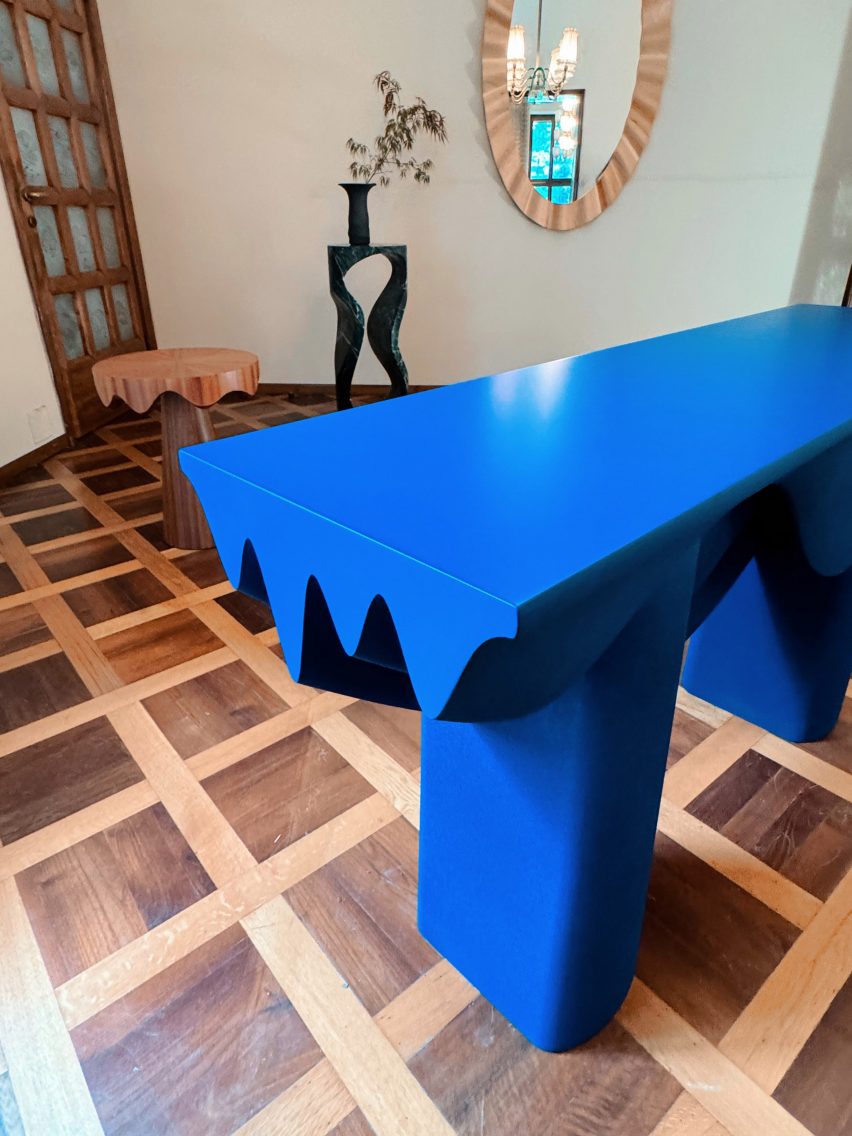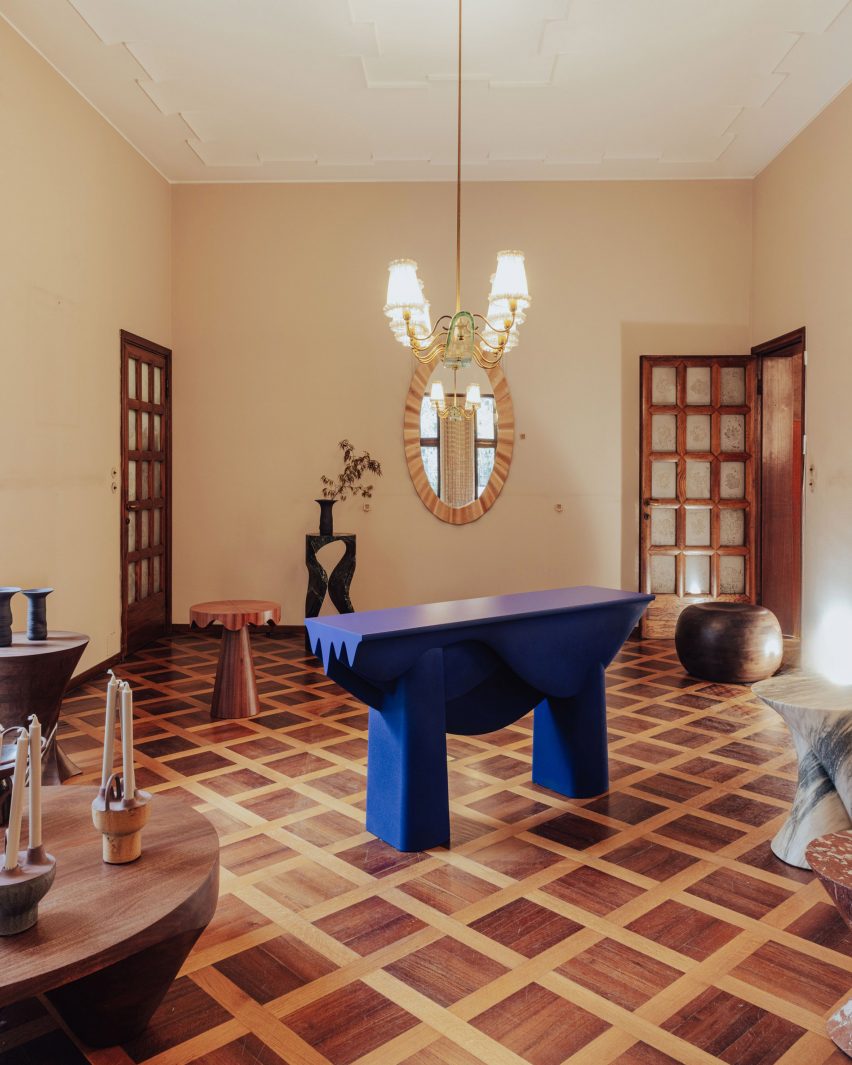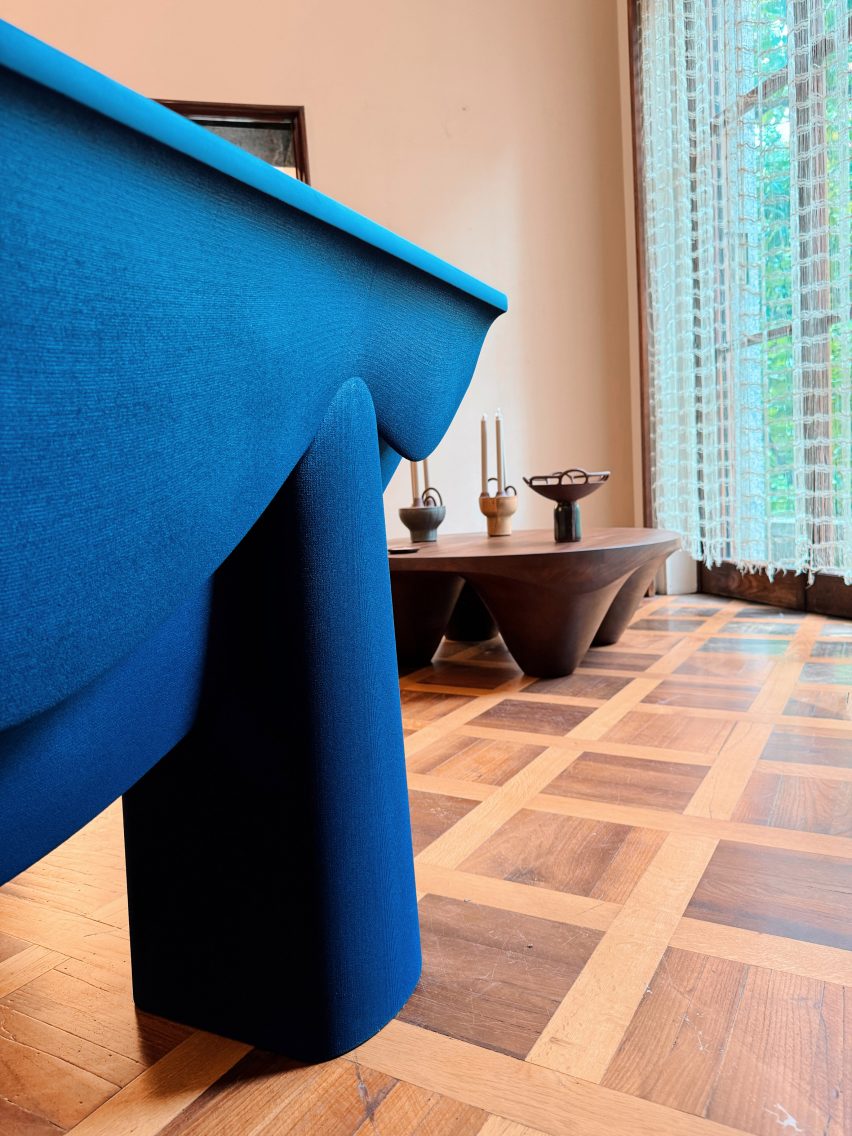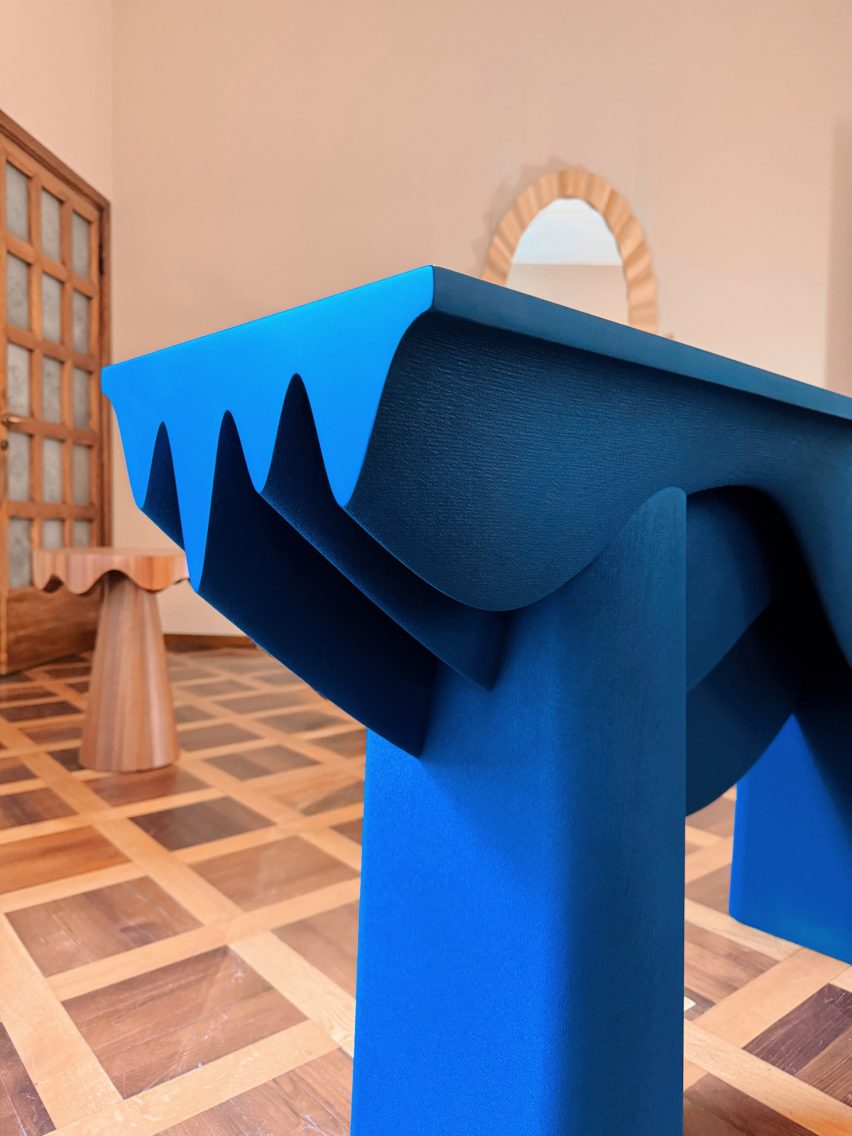
Studio TOOJ 3D-prints Contourage console table from sand
Stockholm-based Studio TOOJ has designed Contourage, a bright-blue table with a wood-grain pattern that was constructed from 3D-printed sand using a binder jetting process.
The table was unveiled at this year's Milan design week as part of Studio TOOJ's exhibition "Restrained Beauty: The Unseen Layers of Scandinavian Design" at nomadic design platform Alcova's Villa Borsani exhibition.
It was constructed together with German manufacturer Sandhelden using a process known as binder jetting, which layers locally sourced quartz sand with a binder.

"Binder jetting is an additive manufacturing process in which a liquid binder is selectively applied to bond powder particles," Studio TOOJ co-founder Johan Wilén, who designed the table, told Dezeen. "Material layers are then connected to an object."
"The print head allows binders to be strategically applied to the powder," he added.
"The job box lowers and another layer of powder is then spread and binders are added. Over time, the object builds up through the layering of powder and binder."

The binder used for the table is made of furan resin derived from biomass including corn husks, rice hulls and sugar cane, according to the studio.
Studio TOOJ wanted to make the table, which is hollow, from sand to reduce the material usage.

"We've been, and still are, searching for innovative manufacturing methods to bring our ideas to life more sustainably without compromising on design," said Wilén, who founded Studio TOOJ together with Ashley Chong.
"3D printing in sand emerged as a remarkable choice for Contourage, not only reducing the material usage due to its partially hollow structure but also offering intriguing visual possibilities."
The studio also decorated the table with a wood-grain pattern to give it more of an organic feel.
"We made a deliberate decision on the direction of printing to create these unique patterns reminiscent of wood grain," Wilén said.
Theatre stages with their many-layered sets informed the shape of the table, which was spray-painted a bright blue colour using non-toxic paint that the studio says is "safe to people and the environment".
"I have always been drawn to blue for its calming effect," Wilén said. "In Contourage, its hues refract beautifully against the sand grains. It's just mesmerising to look at."

The sand from the Contourage table can also be reused at the end of its life, although the process requires some work.
"One advantage of the technology is that the manufacturer does not melt the grain size in the process, because this process would not be reversible," Wilén said.
"They simply bind the sand grains together and seal the surface in a special treatment," he added.
"The table consists of roughly 93 per cent sand and the rest is furan binder, epoxy and coating. It's possible to 'burn out' the binder and epoxy. After this, the sand can be recycled for other processes or general waste applications."
Numerous designers showed pieces at Alcova this Milan design week, including students at a Swiss design school who created nomadic furniture and Canadian lighting company A-N-D, which designed standing chandeliers for a 17th-century villa.
Milan design week took place from 15 to 21 April 2024. See Dezeen Events Guide for an up-to-date list of architecture and design events taking place around the world.